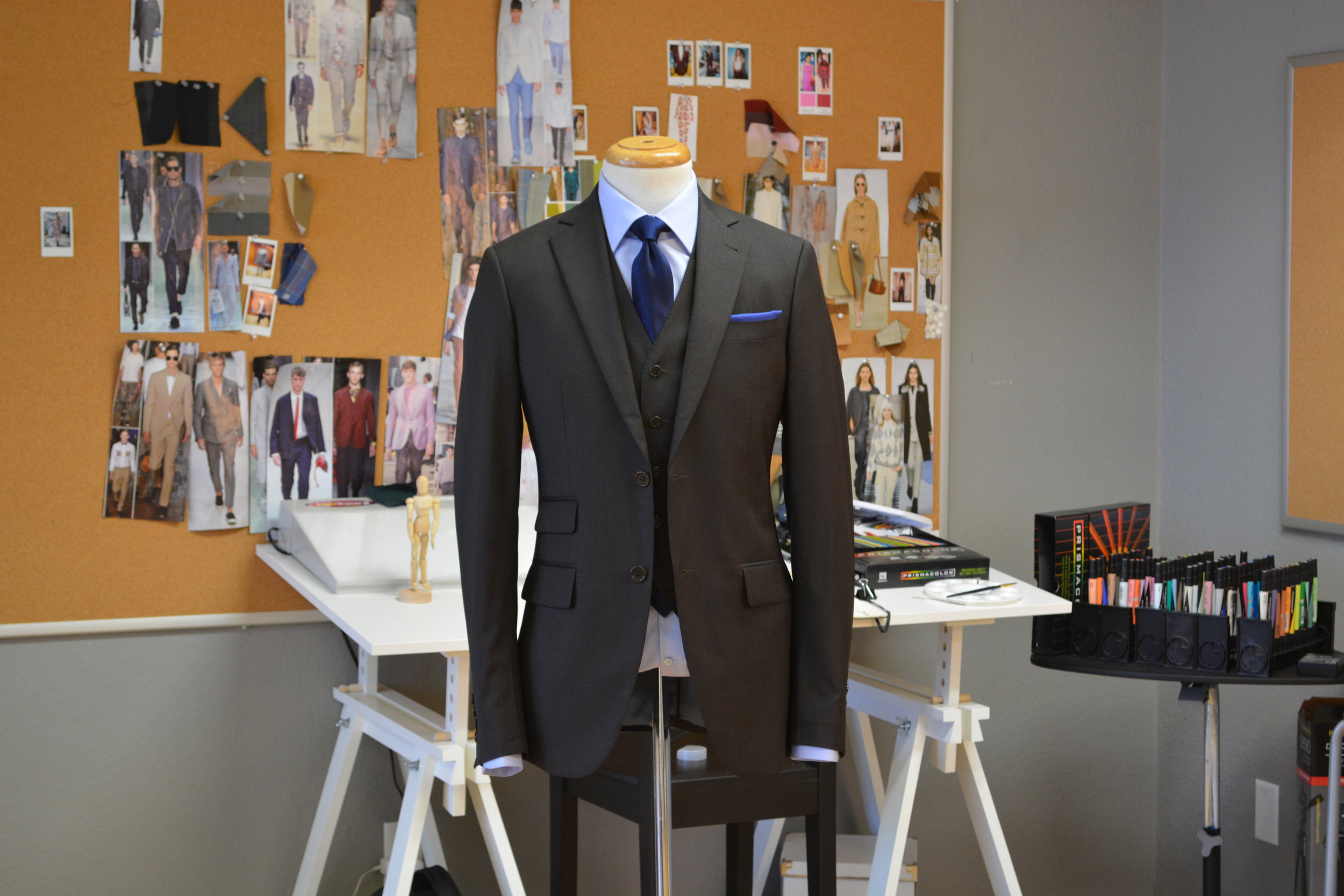Not all custom suits are made equally
Three Things to Look for in a Custom Suit Maker
(And How to Avoid Getting Stuck with a $$$$ Mistake)
Let’s start here: this isn’t a rant. I promise.
But man, the custom suit world has gotten crowded. Every week, it feels like another “custom clothier” pops up on Instagram offering “bespoke-level” suits in two weeks for the cost of a decent dinner at Mastro’s. It’s gotten over-saturated — and while that’s not inherently bad, it is dangerous if you don’t know what you’re buying.
Because here’s the truth: most people don’t know enough about great tailoring to spot the difference between a genuinely well-made suit and a mediocre one. And the difference is massive.
So before you spend your hard-earned money on a “custom” suit that’s basically a glorified department-store blazer, here are three things you need to look for in a real suit maker.
A great custom suit is a combination of artistry in pattern making, skill of tailoring and creative design.
Here are three things to consider when buying a custom suit
1. The Person Taking Your Measurements
This is where everything begins — and often where everything goes wrong.
The measurements are the foundation of your suit. But accuracy alone doesn’t guarantee a great fit. There’s an art to translating those raw numbers into a pattern that flatters your body.
That’s the real difference between tailoring and data entry.
Some modern shops use laser scanners or digital measuring devices to grab your stats. That’s cool and all, but a true tailor knows how to interpret your shape — your posture, your shoulder slope, your stance — and turn that into a pattern that complements how you move.
Here’s the blunt truth:
You can have the most luxurious Super 180s fabric in the world, but if the suit isn’t cut for your body, it’s going to look like S#!T.
A tailor who understands human proportion — not just measurements — is worth their weight in merino wool.
2. The Quality of the Tailoring
You can judge a tailor by their work. It sounds simple, but it’s surprisingly rare for people to actually do it.
Not all “custom” suits are created equal. There’s a huge difference between:
A mass-produced “custom” suit made in an offshore factory.
A trained Shanghainese tailor with a technical background.
A Savile Row master who hand-stitches every seam.
A Milanese tailor who builds suits with soft structure and fluid elegance.
Guess which one is flooding the Los Angeles market right now? (Hint: it’s the one that’s a complete waste of money.)
Many “custom” suits coming out of cheap overseas operations are made by untrained laborers with no pedigree, minimal handwork, and low-quality materials. If you’re paying for “bespoke” and getting something made in a factory next to a fast-fashion line, you’ve basically just bought an H&M suit at 20x the price.
Here are a few telltale signs of poor craftsmanship:
Shoulders that feel puffy or lumpy.
Cheap tailors use low-grade cotton padding that creates a “mushy” look. A proper shoulder feels firm and structured, with a clean, straight line.Plastic buttons.
Quality buttons (like horn, corozo, or mother-of-pearl) can cost $4–5 each. Cheap ones cost 20 cents. You can literally hear the difference when you tap them.Messy stitching.
Look at the seams. Are they flat, ripple-free, and clean? Or are there loose threads and puckering? A great tailor’s work looks smooth, even up close.
If you can’t tell — ask your tailor to show you samples of their actual work. Not stock photos, not catalogs. Their work.
3. The Presentation (AKA the Instagram Test)
Here’s the new rule of thumb: a real tailor’s feed should look like their portfolio, not a motivational quote wall.
If a “custom suit maker” has an Instagram full of stock photos, random celebrities, and “grindset” memes, that’s a red flag.
You should see real clients, real fittings, and real craftsmanship.
Scroll through their posts — do the suits look consistent? Are there close-ups of stitching, lapels, or handwork? Do they show the inside of jackets or the before-and-after of fittings?
If not, it’s probably not their work. And if it’s not their work, you should run — preferably in the opposite direction of wherever they’re measuring people.
The Final Stitch
There’s never been a better time to buy a custom suit — but there’s also never been more noise.
A true custom suit maker is an artist, technician, and teacher rolled into one. They don’t just sell you a suit; they build one around you.
So before you hand over your credit card, ask yourself three things:
Does this person actually know how to cut for my body?
Can I see proof of their craftsmanship?
Do they show their real work proudly?
If the answer to any of those is no, walk away.
Because a suit that doesn’t fit — no matter how expensive — isn’t luxury.
It’s just expensive disappointment.
+ Explore: how we make the best bespoke custom suits in Los Angeles

